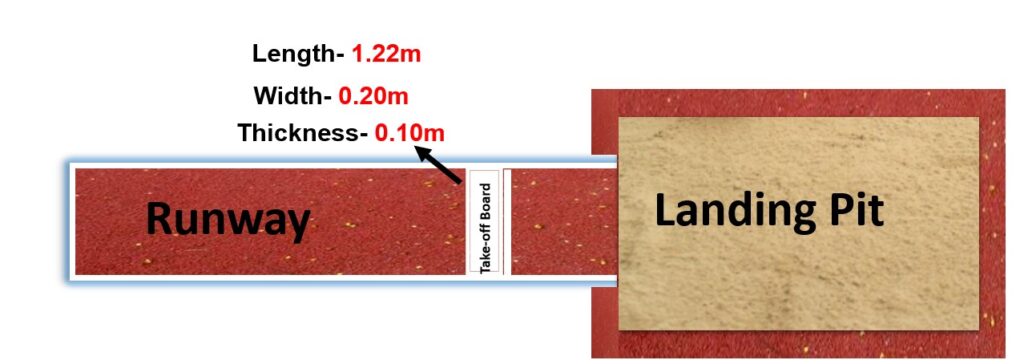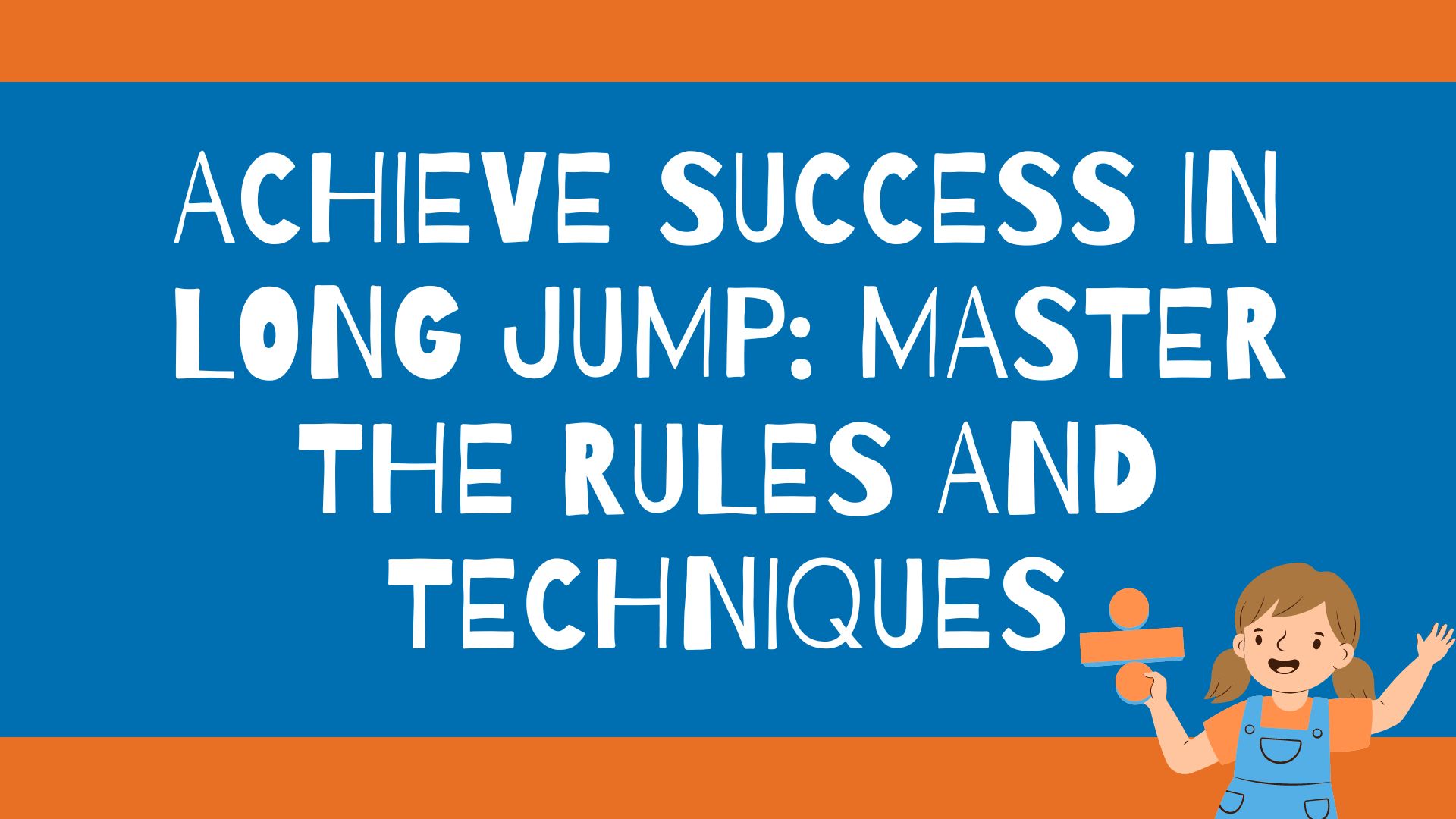Long Jump
The long jump, a classic track and field event, is a fascinating blend of speed, strength, and technique. Understanding the fundamentals and rules can enhance performance and ensure fair competition. This guide covers essential aspects of the long jump, including measurements, techniques, and official regulations.
Measurements of Long Jump
Runway
The runway should be 40-45 meters long and marked with white lines 50mm in width. This provides the athlete with enough distance to build the necessary speed for an optimal jump.

Take-off Board
The take-off board is a critical component in the long jump:
- Dimensions: 1.22 meters long, 0.20 meters wide, and 0.10 meters thick.
- Material: Made of wood or other rigid materials that allow the athlete’s spikes to grip without slipping. It is painted white for visibility.

Plasticine Indicator Board
The plasticine indicator board, placed beyond and slightly above the take-off line, helps officials determine if a jump is legal:
- Dimensions: 1.22 meters long, 10 cm wide, and 7mm high with a 90° indicator angle.
- Purpose: To detect any foot faults by the athlete during take-off.
Landing Pit
The landing pit is filled with soft, damp sand, and the top surface must be level with the take-off board to ensure safety and accurate measurement:
- Length: 9m
- Width: 2.75m-3m
- Depth: 50 cm

Techniques of the Long Jump
Approach Run
The approach run is crucial for building the speed needed for a successful jump. Athletes typically take 16-20 steps, gradually increasing their speed until reaching maximum velocity at the take-off board.
Take-off
The take-off phase requires the athlete to convert their horizontal speed into vertical lift. The athlete should plant their take-off foot firmly on the board and drive upwards and forwards.
In the Air/Flight
Different styles can be used during the flight phase:
- Sail Style: Simple and effective, the athlete extends their legs forward and their arms back, maintaining balance.
- Hanging Style: The athlete hangs their legs underneath them and extends them just before landing.
- Hitch Kick Style: Involves a running motion in the air to maintain balance and maximize distance.
Landing
The landing should be controlled and precise. Athletes should aim to land on both feet and immediately collapse forward to prevent any backward movement that could reduce the measured distance.
Rules of the Long Jump
- Take-off and Run-up Markers: Only markers provided by the organizing committee should be used. Chalk or other substances that leave permanent marks are not allowed.
- Measurements: All measurements are taken perpendicular to the take-off point, from the nearest mark made by the athlete in the sand.
- Foul Jumps: An athlete fouls if they:
- Step beyond the take-off line.
- Touch the ground outside the landing area closer to the take-off line.
- Take off and then touch the runway or ground outside the landing area before landing.
- Practice Trials: Competitors may have practice trials under supervision before the competition starts. Once the competition begins, no further practice jumps are allowed in the competition area.
- Number of Trials: The number of trials depends on the number of competitors. If there are more than eight, each gets three trials, with the top eight receiving an additional three trials. If there are fewer than eight, each competitor gets six trials.
- Time Limit: Each jump must be completed within one minute.
- Leaving the Area: Competitors must not leave the immediate competition area without permission from an official.
Officials and Their Roles
- Chief Judge: Oversees the entire event.
- Judge at Take-off: Checks the take-off and measures the jump.
- Judge at Landing: Determines the point of the nearest break in the sand and measures the distance.
- Recorder: Scores the results and manages the results sheet.
- Scoreboard Judge: Manages the scoreboard.
- Wind-gauge Judge: Measures wind speed at a point 20 meters from the take-off board.
- Assistants: Help level the landing area and replace the plasticine.
Conclusion
Mastering the long jump involves understanding the correct techniques, adhering to the rules, and ensuring accurate measurements. Whether you’re an aspiring athlete or a seasoned competitor, focusing on these fundamentals can help enhance your performance and ensure a fair competition.
Watch video on this topic here.
Play long jump Quiz here.
Download PDF



